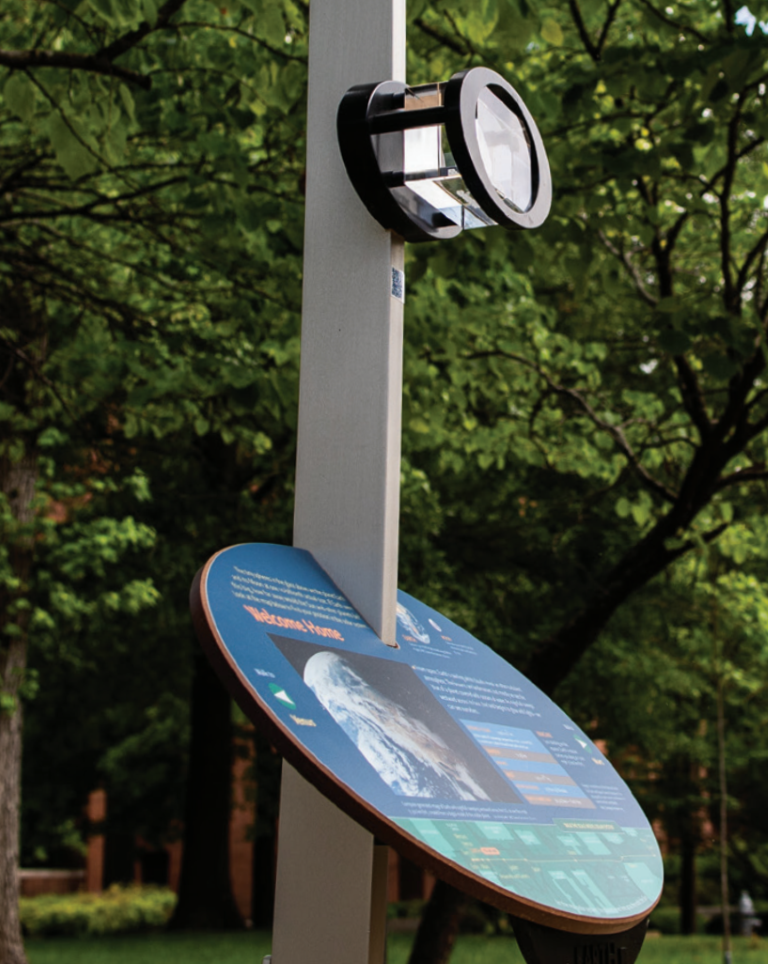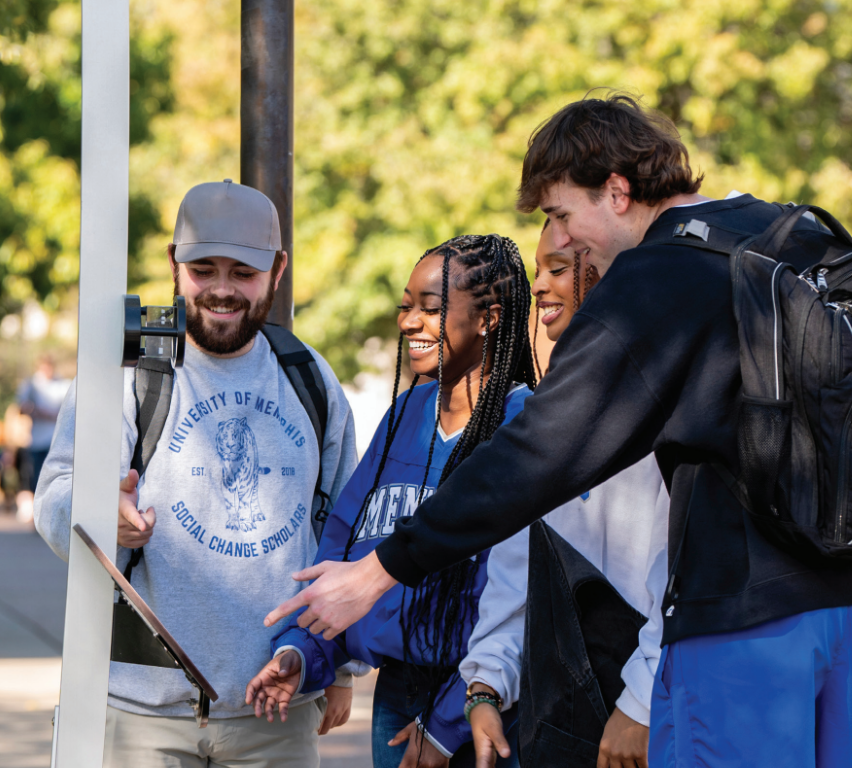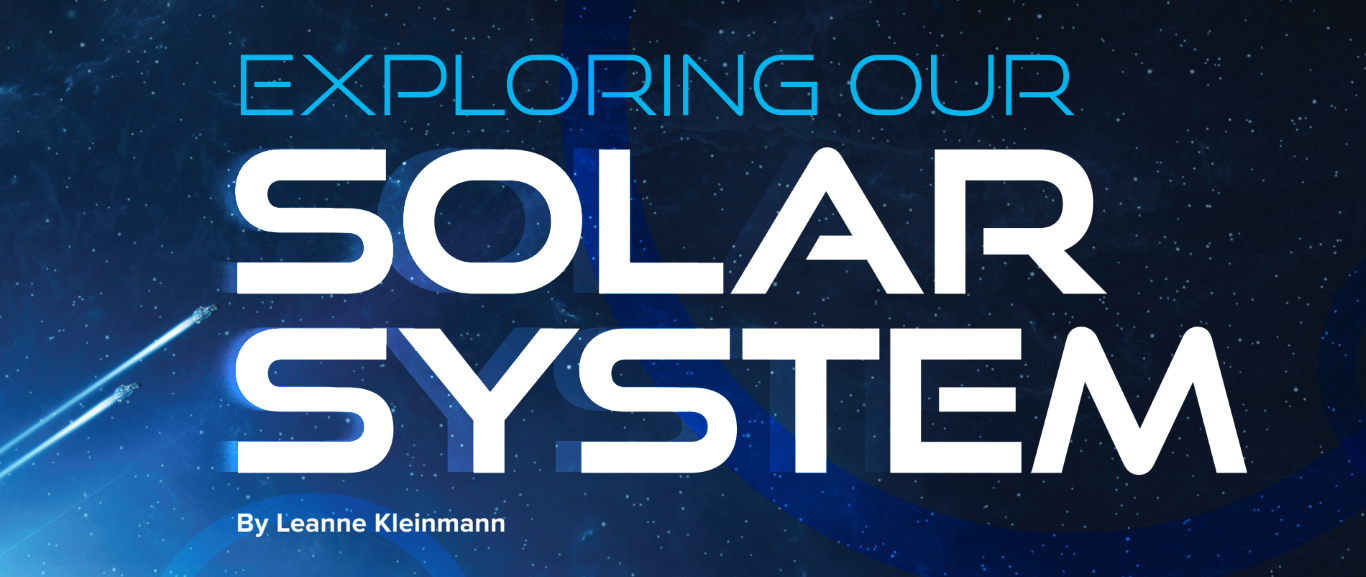Exploring Our Solar System
By Leanne Kleinmann
When Joanne Rhodes was a little girl growing up in Millington, Tennessee, a local bank gave her a coin bank that would change her life.
“It’s called the Plan-It bank,” she said, holding up a small, tin model of the solar system, with a grapefruit-sized sun at the center that includes a coin slot. That small mechanical bank with its planets embedded in rings around the sun captivated the little girl.

“It’s why I study astronomy today,” she said.
Rhodes went on to graduate from the University of Memphis with degrees in Physics and Electrical Engineering and had a career as an optical physics researcher for various federal government agencies before returning to Memphis.
She is now an associate instructor at the UofM, teaching Astronomy and Conceptual Physics to undergrads. But she’s never lost her fascination with the solar system; her teaching outfit always includes a T-shirt with the famous “Earthrise” photo on it — the first color photo of Earth taken from space in 1968.
So, in 2021, when Rhodes discovered that the developer of a solar system model had come up with a lower-cost version that could be experienced with only a 15-minute walk, she knew the UofM campus had to have one. She raised money through grants from the Campus Community Fund and the Tennessee Space Grant Consortium, the Memphis Astronomical Society and individual donors, herself included. The Voyage Solar System model opened in February as a project of the Department of Physics and Materials Science.
The model is the length of six football fields and stretches across the campus from north to south.
Unlike Rhodes’s treasured bank, this solar system model is exactly to scale — the real solar system is 10 billion times larger than the model, though on campus, the planets are set up in close to a straight line, for easy viewing.
“Of course, this is not the way planets really are,” said Rhodes, pointing out that planets don’t align in the universe in a straight line, and that their orbits are elliptical.
You can enter the model from either end — the Sun or Pluto — though beginning at the Sun (on the north end of the model behind the Theater and Music buildings) seems most logical. The Sun is the size of a large grapefruit here, mounted above a plaque with everything you might want to know about it; all the planets in the model have similar plaques and QR codes you can click to learn more (a school curriculum is available, too).
The Earth is surprisingly far away from the Sun — and tiny, comparatively. Each planet is depicted in three dimensions and encased inside a clear crystal, though you have to squint to see some of them. If you sign up for a tour, your guide may launch a robot at the Sun that moves at the speed of light — to scale. It takes eight minutes for the robot to reach the Earth.
 “This solar model is for everyone,” said Rhodes, as she guided the robot and led the
tour. “People have no idea — there’s nothing like Earth in our solar system. It has
everything we need; it’s our little lifeboat.
“This solar model is for everyone,” said Rhodes, as she guided the robot and led the
tour. “People have no idea — there’s nothing like Earth in our solar system. It has
everything we need; it’s our little lifeboat.
“The solar system model helps us see ourselves better,” she said. “I hope when people see this, they’ll feel less division and be more likely to work together to keep life livable.”
To find out more about the Voyage Solar System model, visit memphis.edu/physics/voyager. You will also find a form there to use to schedule a tour. For more about the model itself, go to voyagesolarsystem.org and click on the Community Network page to find the Memphis model.
Share this article

